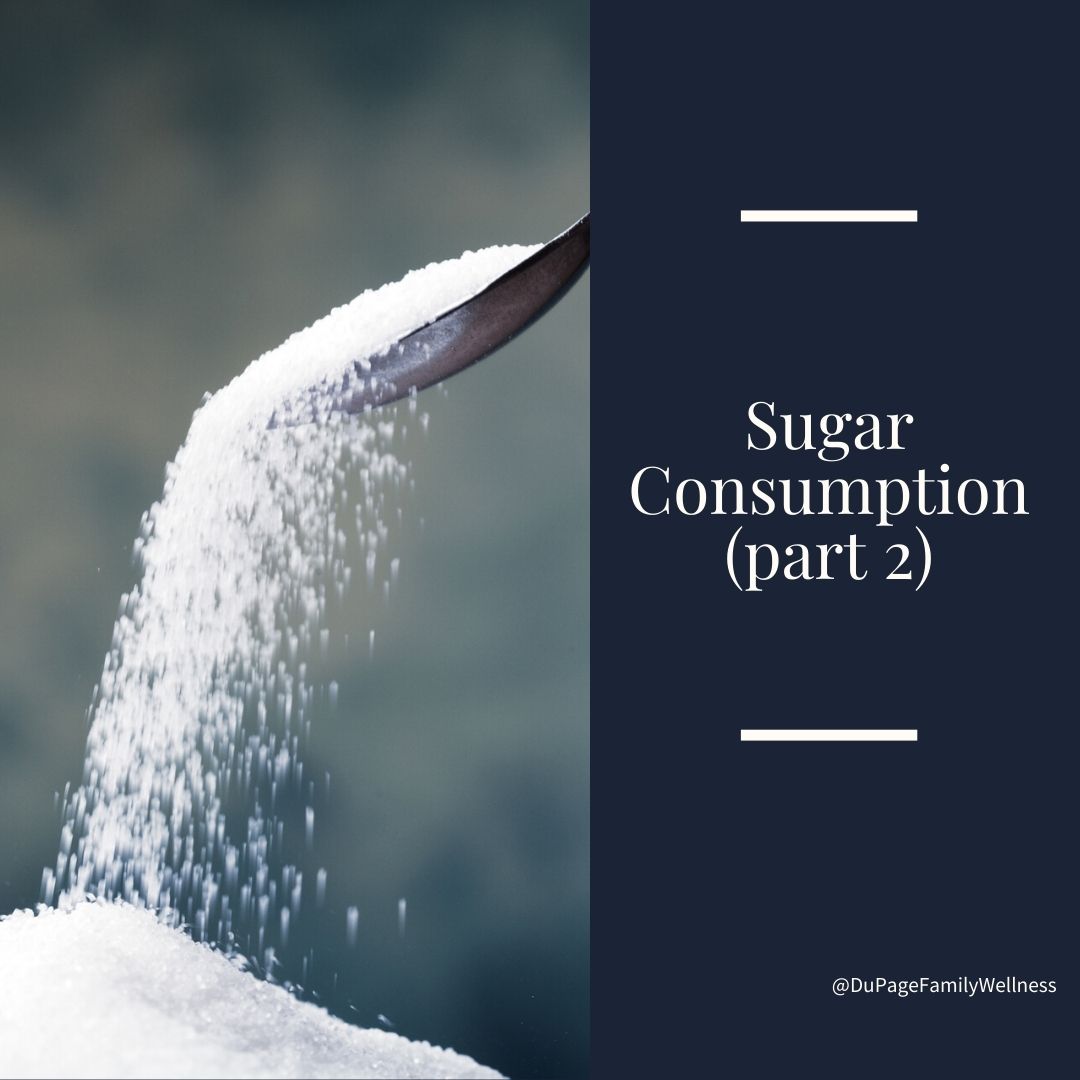
Are You Consuming More Sugar Than You Realize?
After writing the initial post, The Not So Sweet Sugar Reality, there was still more to say about how sugar sneaks into common foods that this topic deserved a follow up.
Before addressing how much sugar sneaks into our everyday foods, let’s put it into context.
How much sugar should we be consuming each day?
According to the American Heart Association and World Health Organization, the recommended amounts of daily sugar consumption are 5 % of total caloric intake or:
Less than 38 grams or 9 tsp per day for men
Less than 25 grams or 6 tsp per day for women
Less than 12-25 grams or 3-6 tsp per day for children depending on size and age
Yet, the average American consumes about 194 grams or 48.5 teaspoons of sugar per day!
How is so much sugar sneaking into our daily plates?
Below is a list of the amounts of sugar found in common foods:
12 oz can of coke = 39 g/9.3 tsp
8 oz cup of apple juice = 26 g/6.2 tsp
Yoplait yogurt = 27 g/6.4 tsp
1 Cups Raisin Bran = 19 g/4.5 tsp
3 Oreos = 13 g /3.1 tsp
AMP Energy Drink = 58 g/13.8 tsp
Starbucks Grande Peppermint Mocha Frappuccino = 65 g/15.6 tsp
Bottled Starbucks Frappuccino Coffee Drink = 46 g/11 tsp
1 Medium 3” Apple = 19 g/4.5 tsp
1 Medium 2.5” Nectarine = 11 g/2.6 tsp
1 Cup Whole Strawberries = 7g/1.7 tsp
Sugar is everywhere!
From this list you can see how common foods, even “health foods” are often loaded with sugar. For example, one Yoplait yogurt cup contains more sugar than an average size woman should eat in the whole day!
In fact, added sugar hides in 74% of processed foods. This is why it is important to get in the habit of reading ingredient labels to spot that extra added sugar. Look for words that end in “ose” (like lactose or sucrose), “tol” (like sorbitol), or ending in malt, juice, or syrup.
It is important to keep in mind that not all sugar is created equal.
The natural sugars found in vegetables and fruits are not as potent. These items also contain fiber, vitamins, minerals, enzymes, and beneficial phytonutrients which moderate the effects of sugar on the body. However, when the natural sugars in these foods, like beets, are separated from their water, vitamins, minerals, fiber, and other beneficial components, we are left with refined white crystals that we know as sugar.
What is the big problem with this refined sugar?
Besides all of the negative health affects (i.e. diabetes, heart disease, weight gain) that were addressed in the first post, The Not So Sweet Sugar Reality, sugar can be compared to drugs in the way that it affects the brain and body.
In animal studies, sugar causes cravings, tolerance, and withdrawal, similar to the effects of substance abuse. In one study, given the choice, rats chose sugar over cocaine because the high that they received from sugar was more pleasurable. In humans, sugar has a similar affect in the brain as addictive drugs leading to cravings and addiction.
What Can You Do About a Sugar Addiction?
A 21-day sugar detox can be a great start when you base it on consuming real, whole foods. This helps to eliminate sugar cravings and break that sugar addiction cycle. When we limit our sugar, we limit the blood sugar spikes and crashes that sugar causes. This has a significant impact on our cravings/
For a deeper look into breaking your sugar cravings and establishing healthy eating patterns for a lifetime, check out my 7 Weeks of Real Food program. In it you will receive the practical support to embrace healthy eating and the tools you need to be successful in your attempts.
Dr. Jamie

